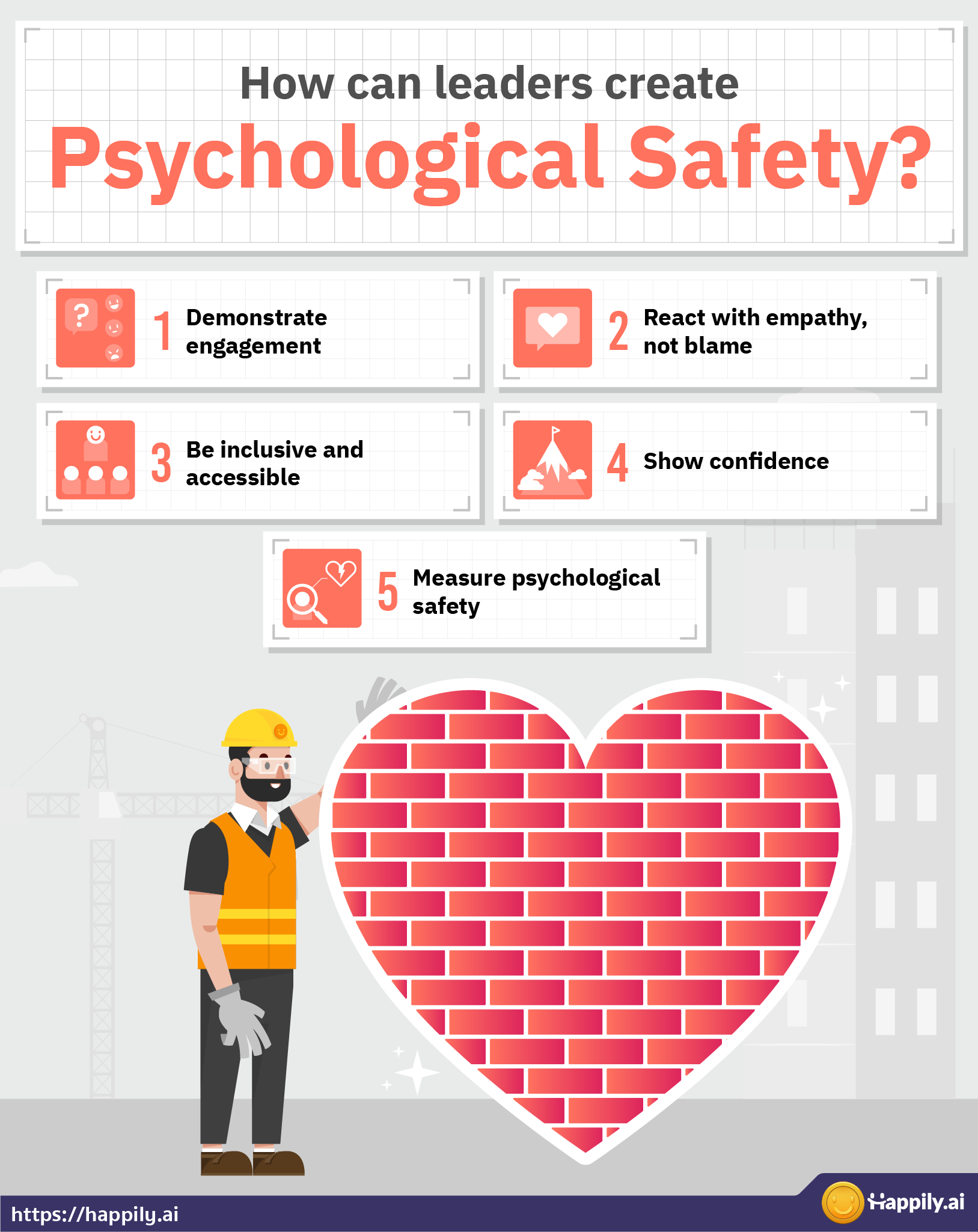A study of Google's tech team performance shows that high-performing teams have five things in common. These five key success factors in building strong teams include psychological safety, dependability, structure and clarity, the meaning of work, and the impact of work. Moreover, this study highlighted that the fundamental contributing factor is psychological safety, which is the belief that you will not be punished for making mistakes.
It is natural for humans to avoid behaving in a way that could negatively affect how others perceive them. But this mechanism has a detrimental effect on teamwork. When team members are low in psychological safety, they are apprehensive when expressing their opinions. Employees who lack psychological safety are reluctant to develop new ideas due to fear of criticism and embarrassment. On the other hand, employees high in psychological safety feel comfortable sharing, asking for help from colleagues, or challenging the status quo. Psychological safety leads to innovation and allows organizations to adapt better to change.
Positive team climate and psychological safety
A study by McKinsey found that a positive team climate, in which team members value each other's contributions, show concern for each other, and understand the role of each member on the team, is the primary driver of psychological safety. A positive team climate often happens when leaders show support and provide guidance for their team members. Leaders can create psychological safety by creating the right atmosphere and encouraging positive behaviors, most effectively through role modeling.
This study also pointed out a set of leadership behaviors that could enhance psychological safety, but only when a positive team climate is present. This set of behavior is known as challenging leadership. A challenging leader motivates team members to reevaluate assumptions about their work and find ways to perform to exceed their expectations and fulfill their potential. Challenging leadership encourages employees to express creativity, makes them feel empowered to make changes, and increases their drive to learn and improve constantly.
Psychological safety is gained when leaders create a positive climate, providing support and mentorship. Leaders should delegate challenging tasks to team members. Without the foundation of a positive team climate, where employees feel empowered and comfortable to do their best work, challenging leadership behaviors have no significant effect on psychological safety.
How can leaders create psychological safety?
Leaders play an essential role in creating a positive team climate and enhancing psychological safety to build a high-performing team. Here are five key steps:

1. Demonstrate engagement
Practice active listening when team members present, share ideas, or feedback; set an example for others. Respond to what they are saying, offer input, and ask questions to learn from the team.
2. React with empathy, not blame
When a mistake happens, address the behavior or problem using non-aggressive language. Blaming will cause internal conflicts and damage trust. Focus on resolving issues together rather than passing blame.
3. Be inclusive and accessible
Make your team feel involved in every aspect of their work by openly sharing work-related information and decisions. Be accessible by making time for one-on-one conversations and feedback sessions. Regularly ask for feedback from others on the team.
4. Show confidence
Team members are more likely to be confident in their work when the leader shows confidence. However, showing confidence should not mean being inflexible or having all the answers. Be open to feedback from the team, share your perspective on work, and encourage them to take risks with confidence.
5. Measure psychological safety
Regularly ask your team if they feel safe to express themselves at work and what can be done to increase psychological safety. Have team members complete psychological safety assessments with questions such as: "How confident are you that you will not be retaliated against or criticized if you make a mistake?"
Leaders who want to build high-performing teams must ensure that their teams feel safe at work. Psychological safety drives teams to be more involved in working together, feel motivated to deal with problems, face challenges, and be willing to maximize learning opportunities and develop themselves. If you are interested to learn more about how we can help create psychological safety and high-performing teams, visit us at Happily.ai.

References
[1] https://rework.withgoogle.com/blog/five-keys-to-a-successful-google-team/
[2] https://th.hrnote.asia/orgdevelopment/190703-psychological-safety/
[3] https://hbr.org/2017/08/high-performing-teams-need-psychological-safety-heres-how-to-create-it
[5] https://www.linkedin.com/posts/amedmondson_psychologicalsafety-activity-6902237907868884992-XGtV









